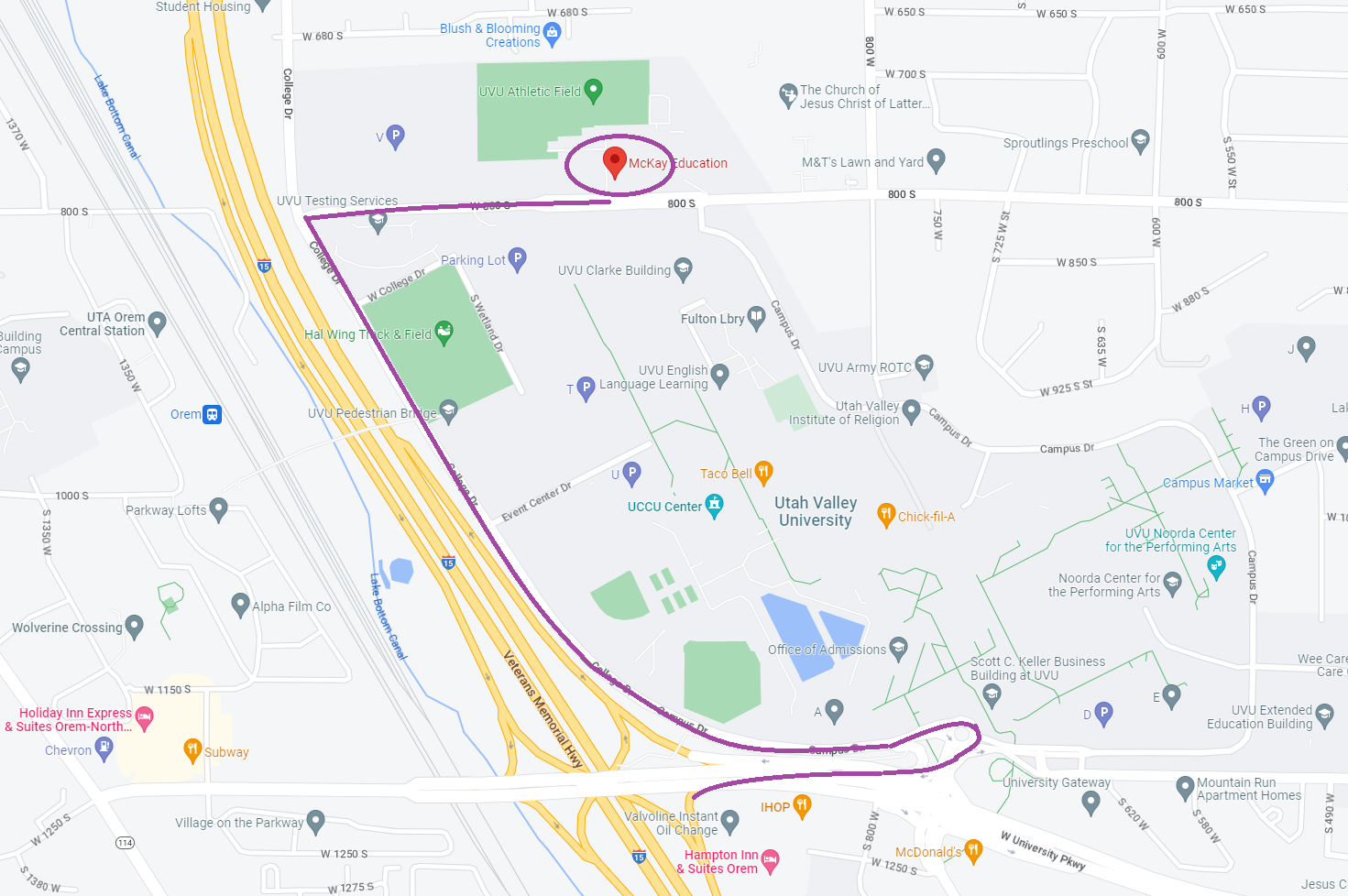Math Camp Summer 2026
Check back for more information about Math Summer Camp 2026!
A week of math adventures awaits 4th through 7th grade students! Math is more than just numbers and this fun and exciting program is designed to spark interest in any student. Campers will engage in fascinating games and hands-on activities that will reinforce mathematical concepts, thinking skills, and problem-solving abilities. We will explore game theory, rocket flight, video games, code breaking, and more, with all the explorations designed to uncover the relevance of mathematics in daily life.
Tentative Schedule:
June 8 - 12, 2026
9am - 12pm: Rocket Camp
1pm - 4pm: Bridge Camp
June 16 - 19, 2026
9am - 12:30pm: Bridge Camp
1pm - 4:30pm: Rocket Camp
June 22 - 26, 2026
9am - 12pm: Rocket Camp
1pm - 4pm: Bridge Camp
Location:
McKay Education Building

This is a map to get to the McKay Education building from I-15. Exit the highway and head toward the university (East side of the highway) and take the two lanes on the left to enter campus. You will go around the round-about and exit at the third exit onto Campus Drive. Take Campus Drive to 800 South (Second light). Turn right onto 800 South and follow it to the McKay Education Building (north side of the road) and turn left into the parking lot.
I heard the word "love" and "math" in the same sentence. Thank you!
My daughter actually seemed very excited about math with a whole new outlook!
My son came home excited every day to learn about math in a fun way.
There are numerous youth sport camps in Utah Valley during summer time. It's about time to have something academic held for kids who are inclined towards academic.
My kids loved it. Math was fun the way you taught it and used the games. They enjoyed it a lot.
If you have any questions or concerns please contact Dr. Lindsey Gerber
Loading Directory data....
Participants will measure the length of different body parts and compare the ratios of lengths to discover if the Golden Ratio is present in their own bodies.
We explore self-similarity using different mediums. Students make their own fractals and see how fractals are present in our world.